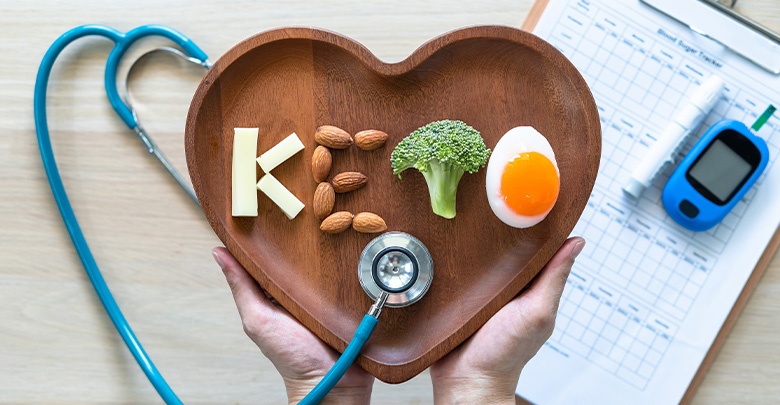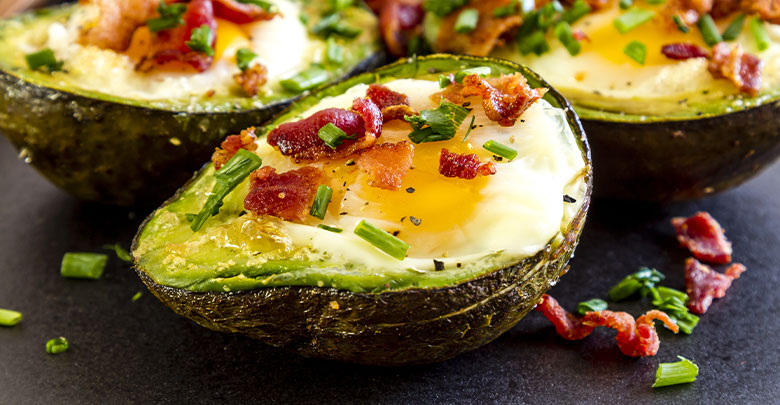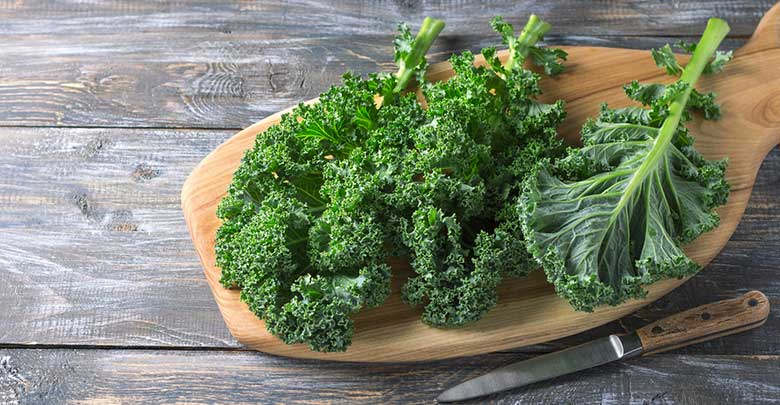The Benefits of Keto Diet for Patients with Osteoarthritis
The benefits of keto diet have been a popular topic in current health and fitness coaching trends. But can patients with osteoarthritis also take advantage of the keto diet?

The benefits of keto diet have been a popular topic in current health and fitness coaching trends. But can patients with osteoarthritis also take advantage of the keto diet?
USE the OMH exclusive code "HEALTH15" to Save 15%What is the keto diet
The ketogenic diet is very similar to the Atkins and other very low carbohydrate diets. The aim of the keto diet is to get your body into a state of “ketosis” (not to be mistaken with keto acidosis which is a very dangerous state of uncontrolled diabetes!) by lowering the amount of carbohydrates you consume to such an extent that your body is forced to burn fat as fuel. There are various types of keto diet, but simply put, the macronutrients you consume in the standard keto diet should be in the following ratio: 75% fat, 20% protein and 5% carbohydrate. This is vastly different to the standard American diet which is typically 50% carbohydrates, 15% protein and 35% fat.
Foods allowed on the keto diet
Eating delicious chicken wings, rib eye steak, cheese, nuts, cream, butter (and loads of healthy vegetables and salads) in whatever quantities you wish? Does this diet sound “too good to be true”? Yes possibly… but bear in mind it does mean giving up almost all carbohydrates (sugar, pasta, bread, rice, potatoes, starchy carbs, alcohol, not to mention any cakes or donuts) and so it can be a difficult transition from a typical diet which contains much higher ratios of carbohydates. However, millions of people worldwide are now convinced of the health benefits of the keto diet, in last decade. The keto diet is, indeed an appealing way to get your blood sugar levels and your waistline into better shape. However, some aspects of the keto diet may influence your osteoarthritis symptoms negatively. Therefore, it is very important to know what components of a keto diet may be harmful to your joint health or increase inflammation. If you select the ingredients carefully and compose your keto diet plan accordingly, you can possibly enjoy the many benefits of the keto diet and improve the symptoms of arthritis.
First, let’s examine the benefits of keto diet for patients suffering from osteoarthritis, and then we will discuss which aspects of a veto diet need to be handled with the necessary caution.
Low carb intake reduces arthritis symptoms
Multiple studies have reported that low carbohydrate diets have many positive effects on osteoarthritis symptoms. The keto diet reduces the carbohydrate intake to a very low level – between 20-100 grams of net carbohydrates per day.
One element, is that refined carbohydrates such as bread, pastries, pasta etc have a high calorie content. The other element is that refined carbohydrates cause imbalances in blood sugar levels which lead to weight gain. As such by cutting out carbohydrates, the reduced calorie intake and better controlled blood sugar levels lead to weight loss, which will immediately result in less weight bearing on the impacted joints. The clinically proven effect of weight loss on OA alone, can slow down the disease progression and result in significant pain relief.
A study done at the University of Alabama at Birmingham, Alabama compared the effects of a low fat diet to a low carbohydrate diet, and found that a low carbohydrate diet reduced the oxidative stress responsible for inflammation, which also leads to pain relief and better function.
Less pain means that it is easier to take part in normal everyday activities, and in sporting activities. This can lead to further weight loss and to a healthier and happier life. You can read more about this positive spiral in this article.
Fibre and the keto diet

Healthy greens like kale are an important part of a healthy keto diet
If you decide to follow a keto diet, it is very important to include enough fibre in your diet. You need both soluble fibre, and insoluble fibre for healthy digestion. Sometimes people following a keto diet may consume too little fibre because many vegetables and almost all fruit have high amounts of carbohydrate. If you have osteoarthritis, it is particularly important that you consume enough fibre on the keto diet. Some examples of good sources of low carbohydrate, high fibre foods are blueberries, avocado, cucumber, leafy greens, broccoli, cauliflower, brussel sprouts, celery, artichokes, bak choy, walnuts, chia seeds, almonds, flax and hemp seeds
By including these low carb, high dietary fibre foods in the keto diet, you can also benefit from the proven effects of a high fibre diet. A cohort study of 4800 people found that a high fibre diet lowered the risk of osteoarthritis by 30%
With these multiple modes of action, the positive effects of a low carb diet can contribute to the health benefits of keto diet, especially in the case of osteoarthritis.
In line with the most current research, we would recommend that you to follow a moderately low carbohydrate diet (20-50 grams) with a good balance between net and total carbs, in order to maximize the positive effects of low carb and high fiber intakes. The way you would work out the net carbohydrates, is to simply deduct the fibre – which is not absorbed by your body – from the total number of carbohydrates.
Fats and their inflammatory or anti-inflammatory effects
The keto diet is a high fat diet. However it is important to differentiate between the healthy fats, which have anti-inflammatory benefits, and unhealthy fats such as trans-fats, which increase inflammation!
One of the most important symptoms and causes of pain relating to arthritis is inflammation. Foods and fats that have anti-inflammatory properties can help to reduce inflammation and pain, whilst inflammtion provoking foods will aggravte the condition.

Healthy fats
Healthy saturated fats
Good animal sources of saturated fats on the keto diet include eggs; grass fed, pasture raised red meat; high fat dairy products such as butter, whole raw milk and heavy cream; ghee, lard, and tallow.
Plant sources of saturated fats include coconut oil, coconut butter, cocoa butter and MCT oil
Healthy unsaturated fats
Unsaturated fats have been accepted as healthy for many years. They include
- Oils: flax seed, extra virgin olive oil, macadamia nut, avocado oil, sesame, fish and krill oils
- Nuts: almonds, pecans, macadamias, brazil nuts, walnuts
- Seeds: chia seeds, pumpkin seeds, sunflower seeds
- Plant based fats such as olives and avocados
- Wild fatty fish such as salmon, mackerel, tuna and trout
Omega 3 vs Omega 6
Oily fish are a great source of healthy omega-3 fatty acids. Omega-3 is also found in walnuts, chia seeds, and grass fed pasture raised organic livestock.
Omega 6 is found in very high levels in processed vegetable oils, which are typically made from heavily subsidized crops such as canola oil, sunflower oil, rapeseed oil etc. Omega 6 in excess has an inflammatory effect on the body.
The problem with most western diets is that the ratio of omega 6: omega 3 can sometimes be as bad as 20:1, instead of the ideal 3:1 or 1:1 ratio. Both omega 3 and omega 6 compete for the same receptor on a cell, so you can imagine that if you have too much omega 6 – which has inflammatory properties – in your system, your body cannot absorb the omega 3, which is critical to decrease inflammation.
Unhealthy Fats
The worst inflammtion causing fats are trans fats. Trans fats are found in processed foods like margarine, non-dairy coffee creamers, packaged and processed snack foods.
Fast foods, frozen doughs and deep fried foods are also all high in trans-fats, and should ideally be avoided due to their inflammation provoking properties.
As an osteoarthritis patient you must also be cautious about the possible inflammatory effects of grain fed meat. The reason for this, is that grain fed livestock are typically pumped with hormones, antibiotics and grains in order to mass produce the meat. They also have a higher amount of omega 6 than organic pasture fed animals.
Eating fish, chicken, duck or game, like venison or boar instead of standard grain fed read meat is the better choice for patients with osteoarthritis in order to enjoy the benefits of keto diet.
In addition if you can afford to buy organic pasture fed meat, you will get the benefits of the higher omega 3 quantities, without all the anti-biotics, hormones and omega 6 typically found in lot/grain fed livestock.
Antioxidant vegetables support the benefits of keto diet

There are many healthy vegetables that have been proven to have antioxidant and anti-inflammatory effects. Dark leafy greens like spinach, kale, and swiss chard, are rich in Vitamin D and phytochemicals.
Broccoli, another staple part of the keto diet, has very high concentrations of Vitamin C and K, calcium as well sulforaphane. These nutrients also play a crucial role in maintaining strong bones and muscles, and in preventing further damage to joints from osteoarthritis.
In the keto diet you can consume unlimited amounts of these green, low carb vegetables and therefore benefit from all the anti-inflammatory effects.
Foods to avoid
If we are talking about diet and arthritis we must also mention the rather controversial discussion around night shade vegetables. Tomatoes, potatoes, eggplants. peppers, tobacco and even chili based spices like cayenne, paprika and tobasco may be particularly problematic for people who are sensitive to these substances, have leaky gut syndrome or auto-immune diseases. This is due to their saponin (called glycoalkaloids) and or capsaicin content.
Nightshades have been associated with increased gut permeability which may lead to inflammation and arthritis pain.
It is possible that nightshade vegetables are better tolerated by some people, than others, depending on their gut health, and the presence of other auto-immune diseases. The Arthritis Foundation recommends that you try cutting nightshades out to see if you feel any difference, and if they have no impact on your pain and inflammation levels then you can consume them, as they do also have healthy nutrients which may be beneficial.
Summing up
In summary, the keto diet if followed carefully can be a healthy lifestyle choice for patients living with osteoarthritis. The low carb, no sugar, good quality protein and healthy fat content in a keto diet, combined with the large quantities of dark leafy greens and anti-inflamatory vegetables contribute to the benefits of keto diet.
Recipes
Would you like to try some delicious keto diet recipes? These recipes are low in carbs, high in fat, are packed with nutrients and are keto friendly. Why not give them a try?
